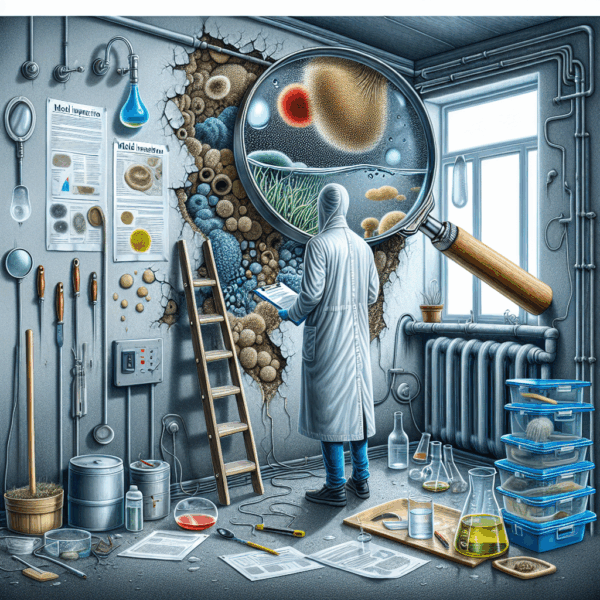
“`html
Introduction
Imagine a creeping shadow lurking in your home, invisible yet powerful, capable of wreaking havoc on your health and property. This shadow is mold—a common household enemy that often goes undetected until it has already caused significant damage. Knowing how to identify the signs of mold can be your first line of defense against this unwelcome intruder. In this article, we will guide you through recognizing the signs of mold, proper inspection techniques, and the importance of seeking professional mold inspection and testing services.
- Understanding the Signs of Mold
- Common Locations for Mold Growth
- DIY Mold Inspection Techniques
- When to Call in the Professionals
- Key Takeaways
- Frequently Asked Questions (FAQ)
Understanding the Signs of Mold
Mold has an uncanny ability to hide in plain sight, but certain clues can reveal its presence:
- Musty Odor: A persistent damp smell in your home can indicate mold growth.
- Visible Spots: Look for discolored patches on walls, ceilings, or floors, especially in damp areas.
- Health Symptoms: If you or your family members experience respiratory issues, headaches, or skin irritations, it might be due to mold exposure.
Common Locations for Mold Growth
Mold loves moisture and warmth, making specific areas prone to its development:
- Bathrooms: Showers and sinks are prime spots for mold due to high humidity.
- Kitchens: Leaky pipes and appliances can create ideal conditions for mold.
- Basements and Attics: Poor ventilation combined with dampness makes these areas susceptible to mold infestations.
DIY Mold Inspection Techniques
You don’t need to be a detective to uncover mold in your home. Here are some strategies to conduct your own inspection:
- Visual Checks: Inspect areas where water damage has occurred or where moisture is prevalent.
- Mold Testing Kits: Utilize home testing kits available at local hardware stores to sample air quality.
- Humidity Monitoring: Keep humidity levels below 60% using a hygrometer to prevent mold growth.
When to Call in the Professionals
If your DIY efforts yield concerning results or if you suspect extensive mold growth, it’s time to reach out for professional help. Experts in mold inspection services not only identify hidden mold but also provide effective remediation strategies. Ignoring mold can lead to structural damage and serious health issues—don’t let this silent menace take control of your home!
Key Takeaways
To summarize our insights:
- Stay vigilant for signs of mold including odors, visible spots, and health symptoms.
- Know the common locations where mold thrives in your home.
- Employ DIY techniques for initial inspections but don’t hesitate to contact professionals if needed.
Frequently Asked Questions (FAQ)
What types of mold are commonly found indoors?
Common indoor molds include Cladosporium, Penicillium, and Stachybotrys, each with distinct characteristics and risks.
Is all mold harmful?
No, not all mold is toxic, but even non-toxic varieties can trigger allergic reactions in sensitive individuals.
How can I prevent mold from growing?
Maintain low humidity levels, ensure proper ventilation, and quickly address any leaks or water damage.
Conclusion
Your home should be a sanctuary, free from the shadows of mold. By being proactive and informed about how to detect this insidious foe, you can protect both your living space and your health. If you suspect you have a mold problem, don’t hesitate—reach out to a professional service like Zephyrhills FL Mold Remediation to ensure thorough inspection and remediation. Together, we can keep the specter of mold at bay!
“`
